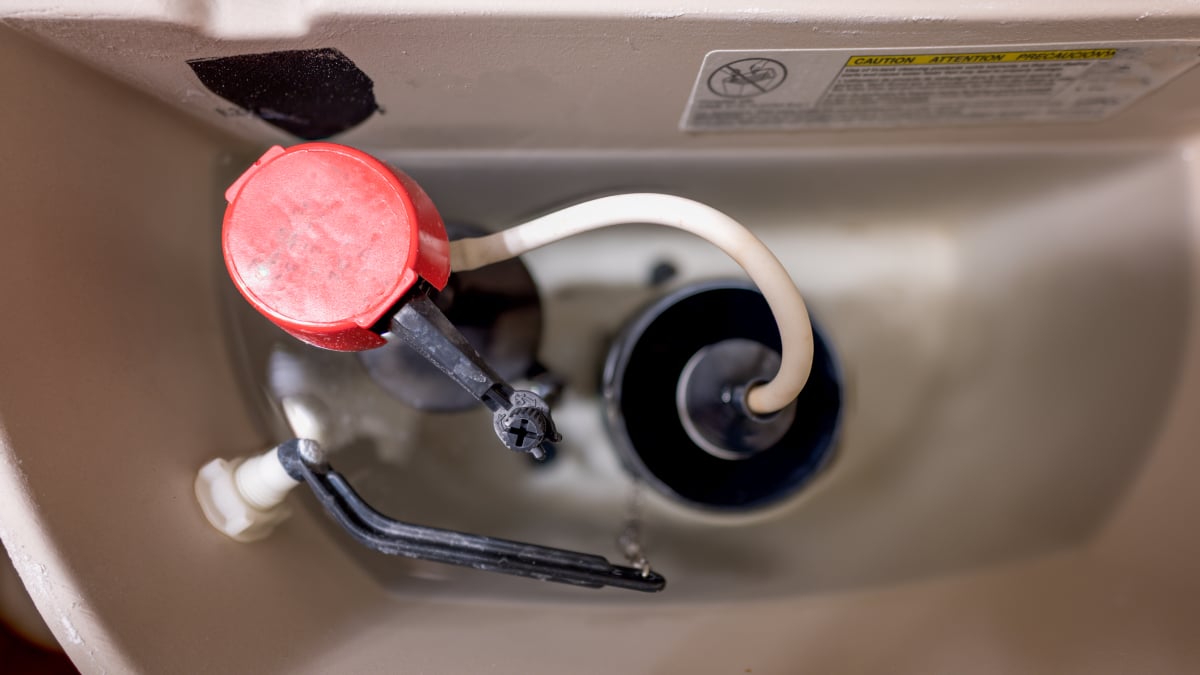
If you imagine the steps involved in cleaning a toilet, you probably think of scrubbing the bowl, wiping down the exterior. But what about inside the toilet tank?
Toilet tanks can be easy to overlook, because unless there’s something wrong—like a toilet that won’t stop running—there’s not much of a reason to lift the lid. But even if everything is running smoothly, it’s still a good idea to clean the inside of your toilet tank once or twice a year. Here’s why that’s important, and how to clean your toilet tank the right way.
Why you should clean your toilet tank
The tank on the back of your toilet houses all of its working and moving parts. If the parts inside the tank aren’t functioning properly, it compromises the entire operation. In other words, keeping your toilet tank clean helps to keep things flowing.
The most common problem is limescale and other mineral buildup, which can corrode metal and rubber parts inside the tank, and may emit a foul odor. However, mineral buildup is much less of a problem if the parts inside your toilet tank are made of plastic, says Roy Barnes, an experienced plumber and the co-owner of Service Force Plumbing in Rockville, Maryland.
Given the damp, dark conditions inside a toilet tank, there’s also the potential for mold and mildew growth. The good news is that this typically isn’t an issue for toilets that are flushed or cleaned regularly. That’s because flushing the toilet empties the tank completely, then refills it with clean water—meaning the same water isn’t sitting in the tank stagnant for long periods of time, and any organic buildup should be carried away, Barnes says.
Don’t use in-tank cleaners
Last year, Lifehacker editor Lindsey Ellefson explained why you should ignore a TikTok “hack” that was making the rounds, involving pouring a bottle of Fabuloso cleaner into your toilet tank. One of the problems with this method, she wrote, is that the chemicals in the cleaner can break down plastic and rubber components in the tank.
Those in-tank cleaning discs or tablets will also shorten the life of the working parts in your toilet, says Mark Collins, a fifth-generation plumber, and the CEO of 1-800-Plumber + Air—especially those made of rubber. In fact, some manufacturers—including Kohler and American Standard—now include stickers on the inside of tanks noting the toilet’s warranty will be voided if drop-in cleaners have been used.
The right way to clean a toilet tank
Cleaning a toilet tank isn’t difficult if done regularly. Start by removing the lid and assessing the condition of the interior. If it looks relatively clean, with only minor buildup or staining, and there aren’t loose mineral deposits sitting at the bottom, you probably don’t need to drain the tank. Here’s what to do:
How to clean a toilet tank without draining it
Before going to bed at night—or during some other period when you won’t be using the toilet—add about one cup of white vinegar to the toilet tank for every gallon of water it holds. Its capacity will depend on the model and its age, but you don’t need to be that precise, and a cup or two will do. If you prefer cleaning with citric acid, you can add two or so tablespoons of that to the tank water instead.
Either way, let the tank water and acid mixture sit overnight—or at least for a few hours—then throw on a pair of gloves, and use a brush with a long handle to scrub out the inside. (If you used vinegar and the tank’s too full for that, flush, add another splash of vinegar to the tank, and then scrub.) If there are still spots that need work, tackle them with an old toothbrush. Give the toilet a few final flushes to clear out the vinegar or citric acid.
How to deep-clean a toilet tank
For serious stains or mineral buildup, you’ll need to empty the toilet tank. To do this, first, shut off the water supply to your toilet, then flush to empty the tank (don’t worry if there’s still a little water in there), and put on a pair of rubber gloves.
Start by scooping out any debris—like white or gray mineral chunks—sitting at the bottom of the tank. When those are cleared, dunk a brush with a long handle into a solution of one-part warm water and one-part white vinegar (or one or two tablespoons of citric acid dissolved in a gallon of warm water), and scrub the inside of the tank. Use a toothbrush or rag on any areas that need more attention. When you’re satisfied with the state of your tank, turn the toilet water back on, then flush the toilet.
How often you should clean your toilet tank
According to Collins, cleaning your toilet tank once a year should be sufficient for keeping mineral buildup under control. But, to be on the safe side, he also recommends looking inside the tank periodically to make sure there isn’t excessive mineral accumulation, and all the parts are able to function properly.

Comentarios recientes